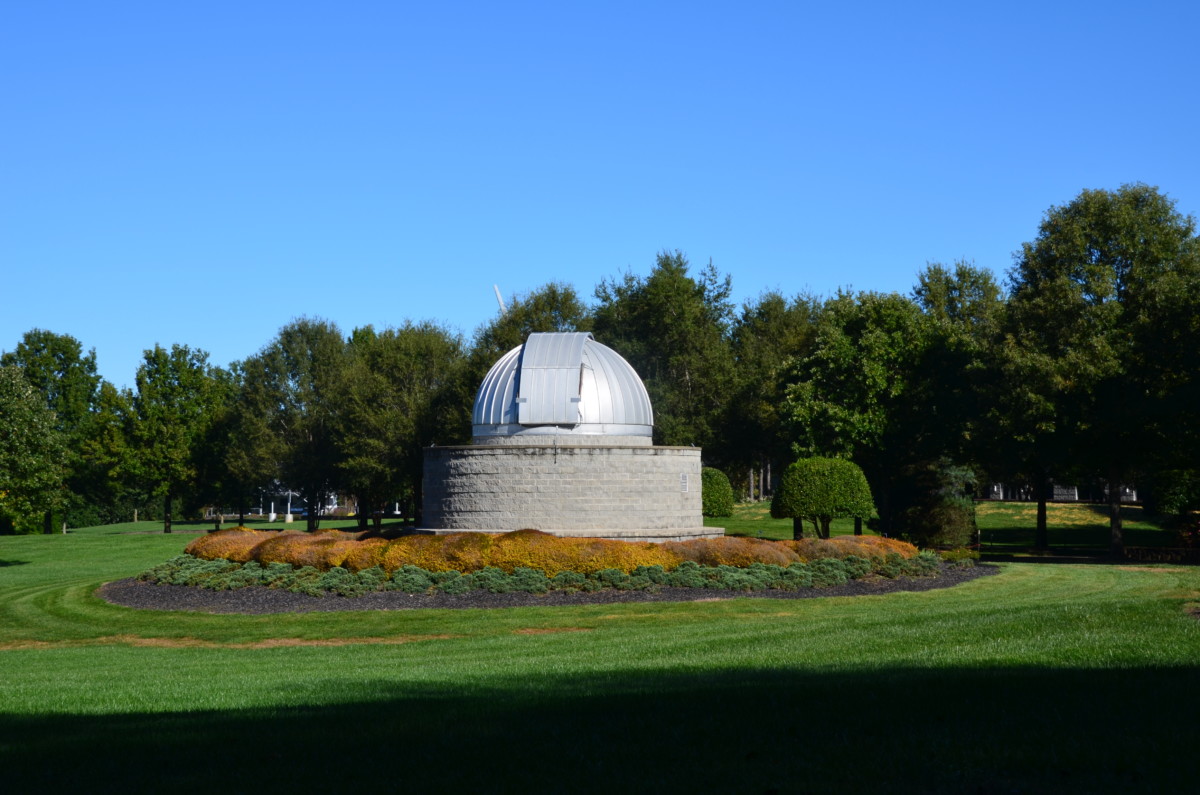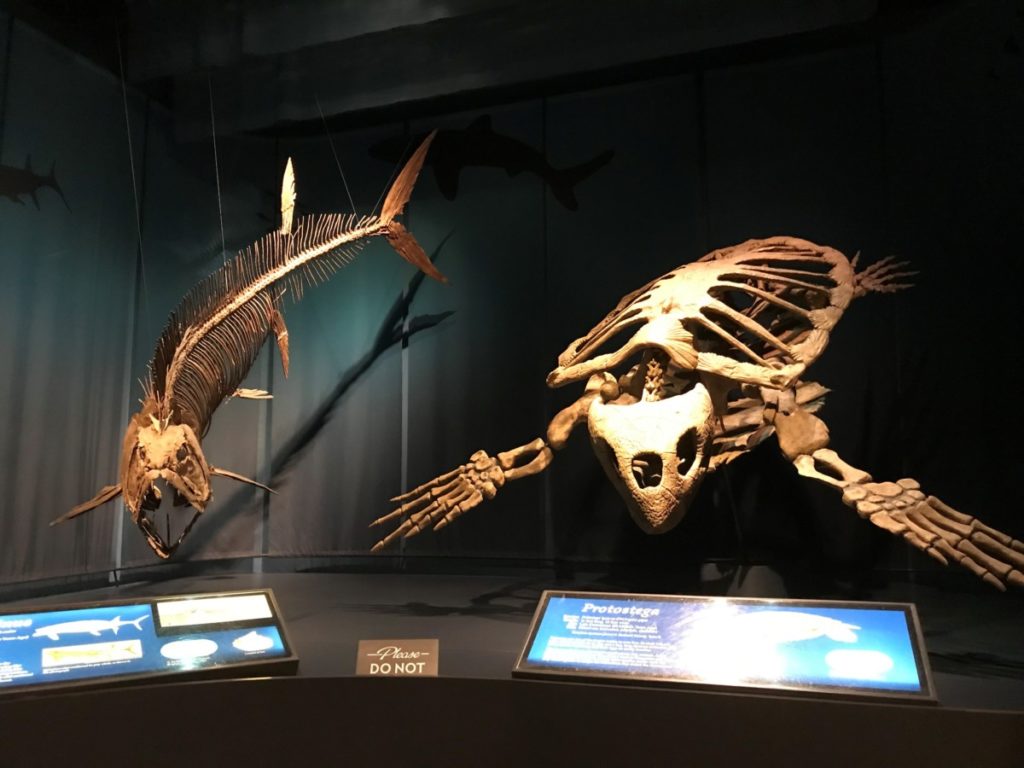One of the best museums of natural history is also the least talked about. Tellus Museum of Science opened 10 years ago in Cartersville, Georgia. Although only about 45 minutes from Atlanta, most people don’t venture up that way even though it’s just off I-75.
The museum boasts four indoor galleries, a planetarium, an observatory, a solar house, and a cafe. The price is a bargain at $17 for adults, $15 for seniors, and $13 for children ages 3-17. The planetarium is an additional cost of only $3.75 for the first show and $2.25 for additional shows.
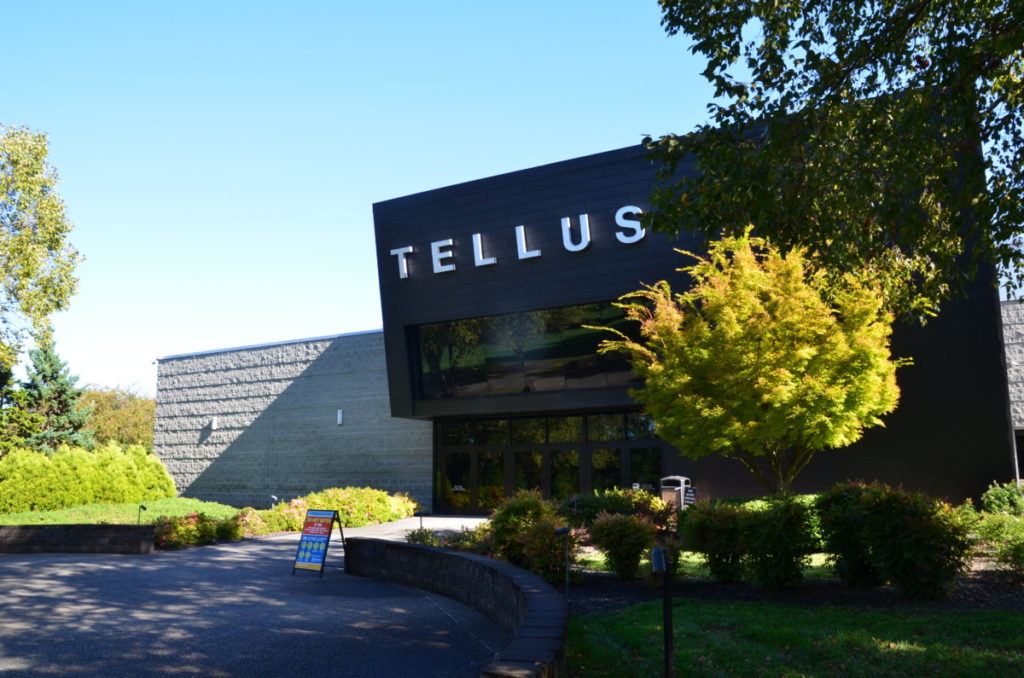
Indoor Galleries
A large 80-foot long Apatosaurus skeleton greets visitors inside the Great Hall. From here, the exhibits, cafe, and planetarium branch off in a spoke and wheel pattern making the museum easy to navigate.
Weinman Mineral Gallery
My favorite section is the mineral and gem gallery. With its large display cases, the stones are beautiful to see. The first section explains some of the earth’s forces that create minerals including meteorites and volcanoes.
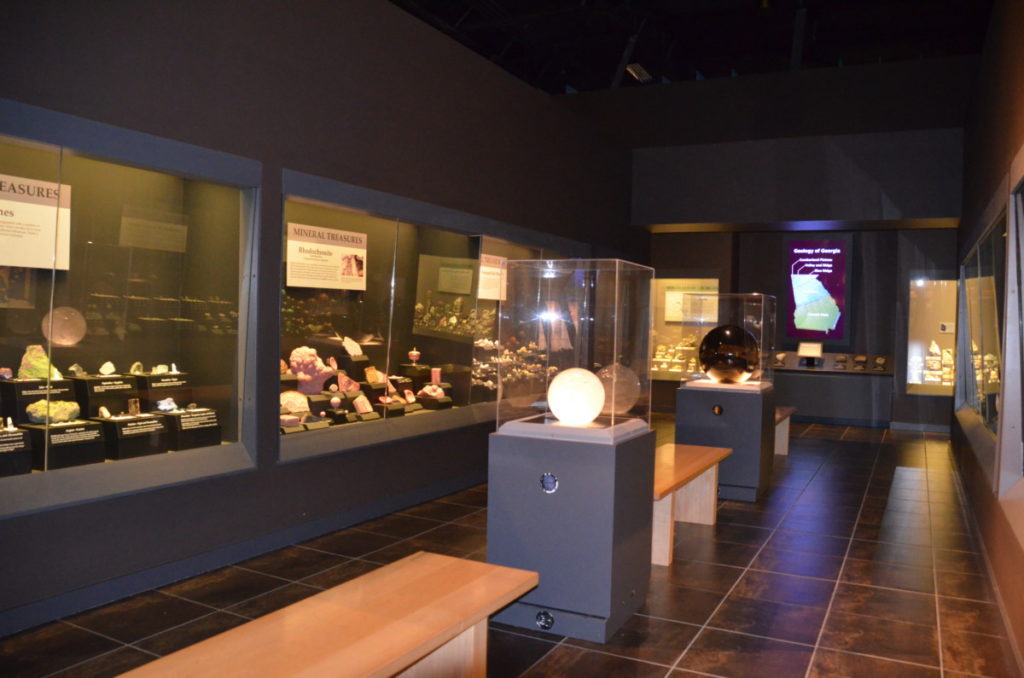
Then it’s on to the different cases. Some feature items from Georgia, including gold, amethyst, barite, and calcite. Another case focuses on southeastern quartz. My favorite display is the birthstones where they have several specimens of each month in different shapes and sizes. It’s interesting to see the difference between the uncut stones found in nature compared to the specimens that are cut, polished and turned into jewelry pieces.
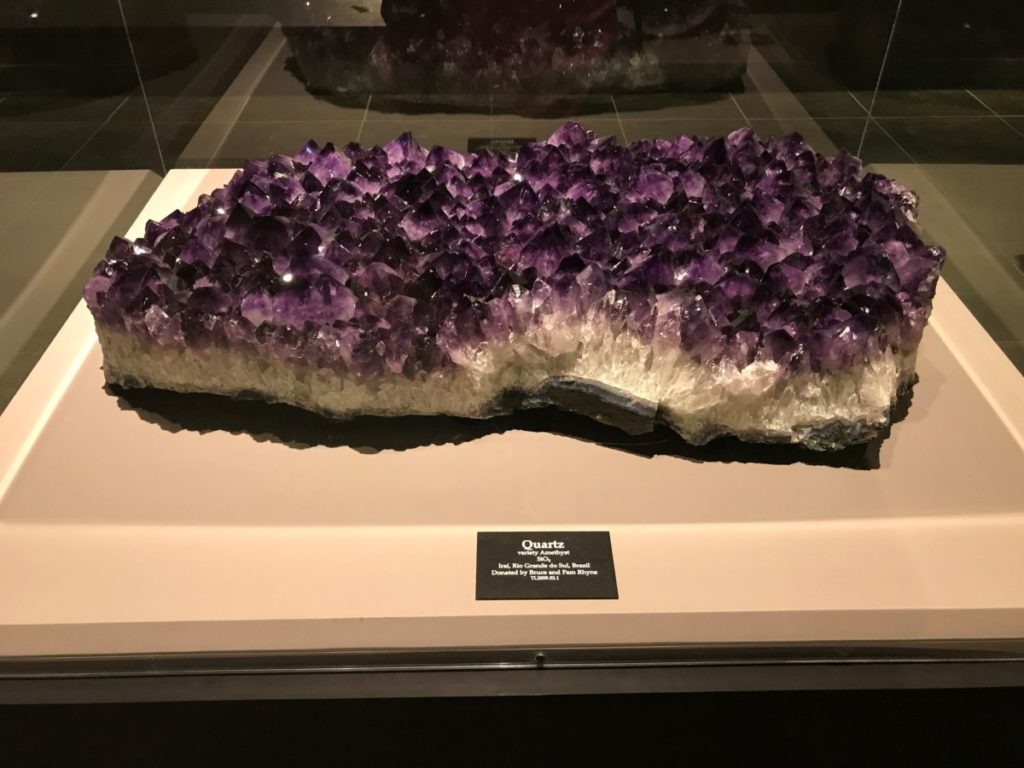
Other items include a case of beautiful pink and red stones from the Andes Mountain in Argentina called Rhodochrosite, an amethyst geode weighing 4400 pounds and stretching 7 feet, and a periodic table with items showing how they are in our everyday world. The fluorescent mineral room shows how some rocks and minerals glow under UV light.
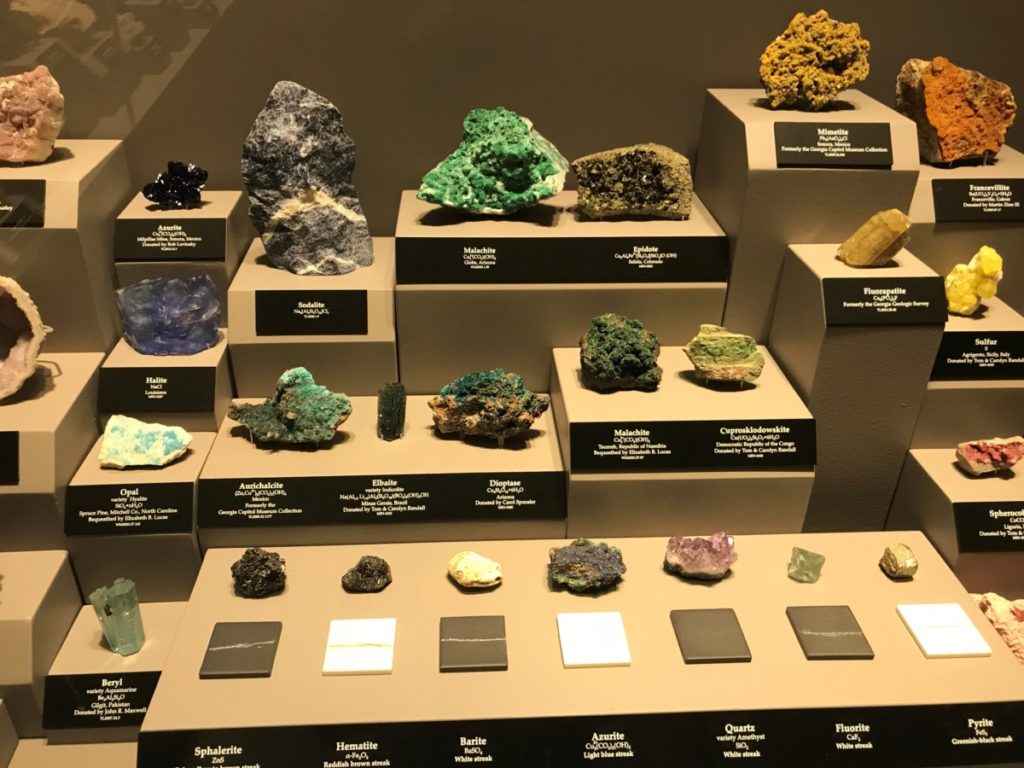
Do you know the difference between a mineral and a rock? Minerals are made of elements or compounds. Rocks are made up of one or more minerals. The example shown was the mineral calcite, which appears in both limestone, a sedimentary rock, and marble, a metamorphic rock.
Fossil Gallery
Although I could spend all my time looking at the gems, it was time to move on to the fossil gallery. I passed several dinosaurs including Stan, the T-Rex. But it was the second room that grabbed my attention with fossils of huge fish. The Protostega, a giant sea turtle at 11 feet long and 15 feet wide, and the 17-foot long Xiphactinus or bulldog fish freaked me out. Add the 9-foot wide jaw of a Megalodon Shark and the Elasomasaurus with giant flippers and I was pretty well spooked.
Dinosaurs included an Edmontosaurus and a cast of a Triceratops skull. I especially liked some of the other extinct animals including the Glyptodon, which looked like a large armadillo, a Smilodon, which was a saber-tooth cat, and The Eremotherium, which was a ground sloth.
Millar Science in Motion Gallery
The third gallery focused on transportation. The exhibit began with bicycles and horseless carriages and moved on to trains and cars. A replica of the 1903 Wright Flyer takes center stage.
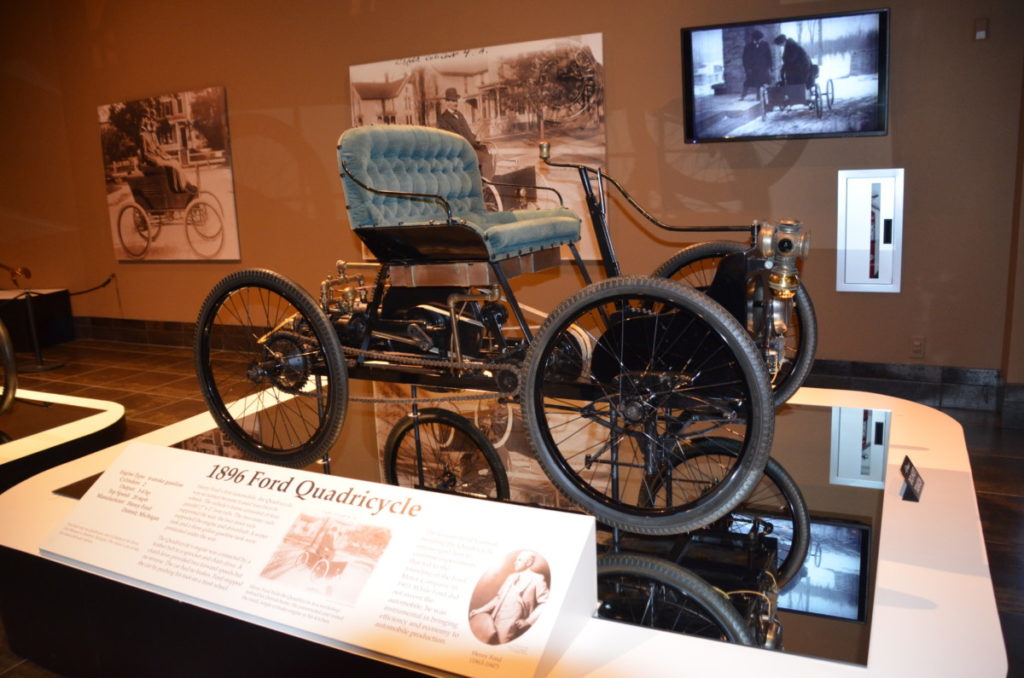
In the next room, the focus shifts to flight and space travel. A replica of the Apollo 1 capsule and Sputnik highlights the area. Models of some of the earliest rocketships also show how far transportation has come in the last 100 years.
My Big Backyard
While I didn’t spend much time here, I could tell that the kids on the school field trip were having fun. This area is where youngsters learn about science from hands-on exhibits including magnetism, electricity, and sound.
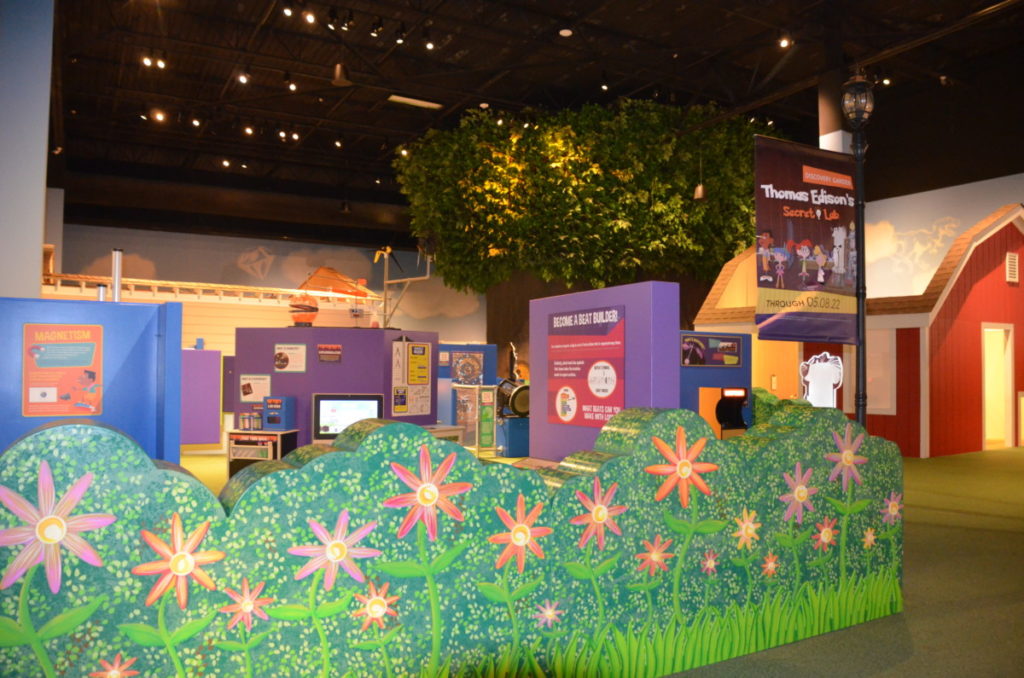
The museum offers other activities for kids include gem-panning, fossil digging, and a downloadable scavenger hunt.
Before heading outside, be sure to look at Foucault’s pendulum near the ticket counters. Showing the earth’s rotation, the pendulum will knock down all the blocks in a 24-hour period.
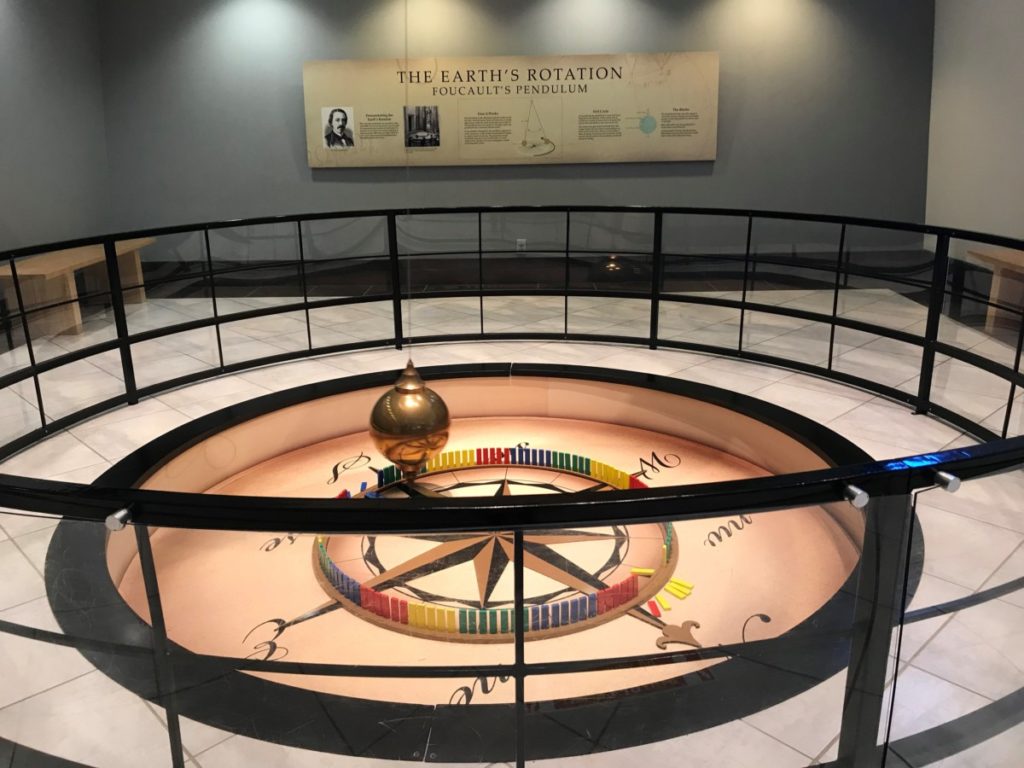
The Solar House
Designed from three steel shipping containers, the solar house boasts 881-square feet of living space. The arch above the house holds 36 solar panels that convert sunlight to electricity via the circuit breaker. Inside, the house uses LED lighting, Energy Star appliances, and a tankless water heater. Tours of the solar house are available Thursdays through Sundays.
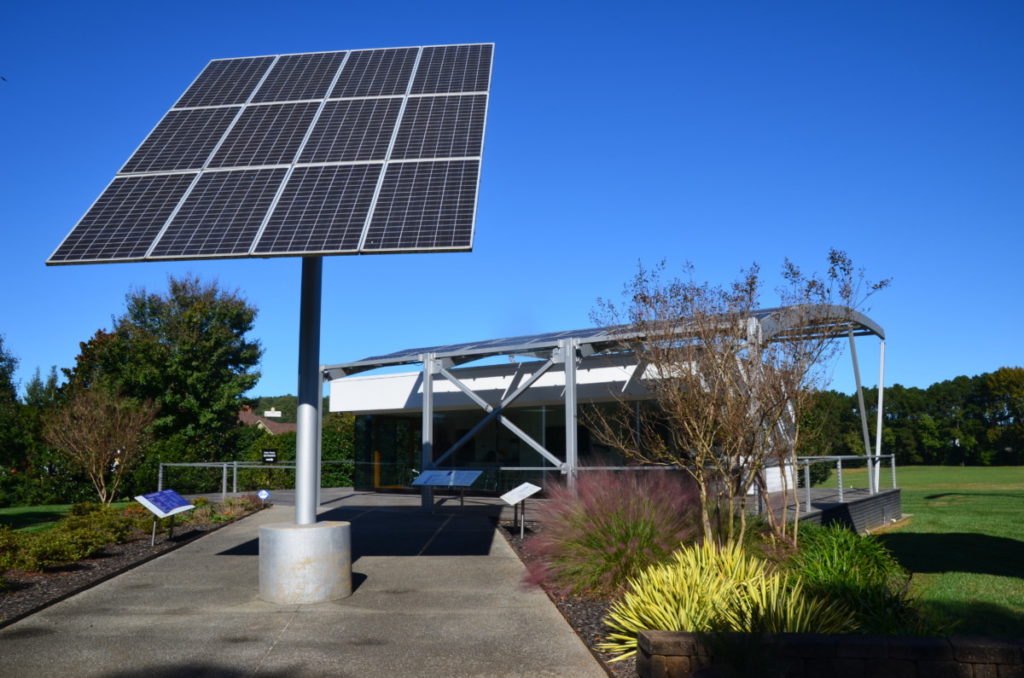
Tellus Museum packs a lot into this museum of 120,000 square feet. Plan to eat in the cafe so you can be fortified to spend more time exploring or catching a show at the planetarium. For more information, visit their website here.
